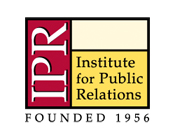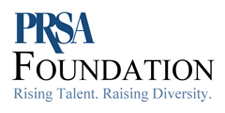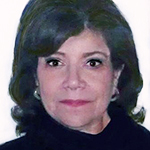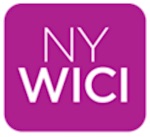The Institute for PR, shopping for a new staff head, has a chance to fill two vacuums—lack of anyone who can do "PR for PR," and lack of a place for New York PR people and the press to meet.
 Both deficiencies are hurtful not only to those making their living in PR and the press but to the image of the occupations themselves.
Both deficiencies are hurtful not only to those making their living in PR and the press but to the image of the occupations themselves.
IPR, which split from PR Society of America in 1989 over the Society's insistence that all board members be APR, has always marched to a different drum from the Society.
IPR's meetings are open to the press. Its slogan is "The science beneath the art of PR." Its 2013 tax return is posted on its website. The PR Society, meanwhile, has a variety of policies and practices that limit the flow of information to members as well as the press.
The departure of Frank Ovaitt as IPR president/CEO as of Dec. 31 is an opportunity to take bold new directions.
We urge IPR to look for a leading PR executive who is based in New York. He or she should be someone who is comfortable dealing with reporters and appearing in public.
IPR Needs New York Presence
A New York presence is needed to compete with the 501/c/3 Foundation of the PR Society. That was set up in 1989 when the Society refused to accept the independence of its own 501/c/3, a requirement of the law. The Foundation's main event is its Palladin dinner in the spring at which a PR executive is honored for lifetime achievement.
 IPR revenues are more than those of the Foundation--$725,474 in 2013 vs.$186,413 for the Foundation (2012 figure). But IPR has staff costs that the Foundation does not. Ovaitt was paid a total of $154,500 and another staffer $72,331 while the Foundation only lists salaries and wages as $11,700 and "management" as $28,750. Net assets of the two are about the same--$559,358 for IPR and $574,907 for the Foundation. There should only be one 501/c/3 in PR but that is another story. The Foundation in recent years has focused on attracting more minorities to PR.
IPR revenues are more than those of the Foundation--$725,474 in 2013 vs.$186,413 for the Foundation (2012 figure). But IPR has staff costs that the Foundation does not. Ovaitt was paid a total of $154,500 and another staffer $72,331 while the Foundation only lists salaries and wages as $11,700 and "management" as $28,750. Net assets of the two are about the same--$559,358 for IPR and $574,907 for the Foundation. There should only be one 501/c/3 in PR but that is another story. The Foundation in recent years has focused on attracting more minorities to PR.
Co-chairs of the IPR are Kenneth Makovsky, chair of Makovsky, and Oscar Suris, executive VP and head of corporate communications, Wells Fargo & Co. He was co-chair of the 2013 PR Society conference in Philadelphia.
Ovaitt headed IPR for five years until 2009 when Robert Grupp joined as president/CEO. Grupp, president of the International PR Assn. in 2008, was then succeeded by Ovaitt two years later. Grupp now chairs the annual Summits on Strategic Communications in Washington, D.C., and London. He also chaired Digital Pharma China in 2013 in Shanghai.
The PR Society, whose staff head Bill Murray, an association professional, spoke to no New York groups in seven years that we know of, has signaled it is going down that road again by naming association careerist Joe Truncale as CEO as of Jan. 12.
Truncale, a Certified Assn. Executive, was at the IPR dinner Nov. 13 at the Yale Club, at the table next to ours. However, we did not get to meet him.
He is now with the AMSP/NAPL/NAQP, a merger of three printing/mailing groups that will announce a new name in January. We have questions about NAPL, where Truncale had worked, which has $24 million in cash and stock in its treasury.
CPJ Is Richest Journalism Group
 CPJ 2011 awards dinner at Waldorf-Astoria in NY. |
A rich trade group that should take an interest in the New York press/PR community is the Committee to Protect Journalists, which will have its annual dinner Nov. 25 that will raise more than $1 million for its already bulging coffers.
Net assets of CPJ as of Dec. 31, 2013, were $14,860,833 and included investments of $12.8M and cash and pledges worth $2.3M.
Joe Pompeo of Capital New York, who somehow got a seat on floor of the ballroom although "working press" are usually confined to the balcony, thought the bloody scenes being flashed on screens were "incongruous" with the "opulence" of the ballroom. He wrote in 2011:
"The black-tie affair, hosted in the Waldorf's opulent Grand Ballroom, can seem somewhat incongruous when taken in the context of the mission it serves. As the assembled media luminaries drank wine and picked their way through courses of vegetable tarts, salmon, lentils, asparagus and bread pudding, arresting images of military and police crackdowns in autocratic regimes flashed across the two large television monitors flanking the stage."
Not only was $1 million in pledges made, but a white paper bag was passed from table to table after the dinner that raised another $76,770, Pompeo reported.
PR Society Deserted NY Community
The PR Society, turning its back on the New York PR and press community, which is mostly in midtown, moved downtown to 33 Maiden Lane in 2004, virtually eliminating its use by the locals. Its library, formerly open to the press as well as PR people at 845 Third ave., closed.
The Society had its last annual conference in New York in 2004, 12 years after the previous one in New York. There are no plans to return to New York. The 2015 meeting is in Atlanta.
A major New York press/PR meeting facility was lost in 1969 when an embezzlement helped the Overseas Press Club to lose its 12-story building on 40th St. across from Bryant Park.
Press/PR groups now mostly meet in New York bars such as The Beer Authority" where the noise level rivals that of an arriving subway train.
Nearly 25 PR groups that used to meet regularly in New York no longer do so. One reason, no doubt, is the lack of an inexpensive, convenient midtown location. One of the last groups to close was PR Society: New York, which shut its doors in April 2013 after meeting for more than 50 years.
Leader Needed to Tackle Such Issues
The press/PR community in Washington, D.C., has an excellent facility in the top two floors of the building at 529 14th st. It long ago lost any ownership in the building but traded that for a rent-free deal that will last until nearly the end of this century.
Its 3,100 members now include 1,400 from the PR and other non-press occupations. It drew attention to itself recently when a function involving government employees speaking to a trade group was at least partially "off-the-record." Washington Post reporter Dana Milbank thought all such events should be either "on-the-record" or staged in a hotel ballroom.
A PR leader is needed who can be a spokesperson for the industry and work on establishing a midtown facility. The CPJ should not be sitting on $15M when there is such poverty in the press/PR community within blocks of its location at Seventh Ave. and 23rd St.
We don't think it would violate any canons of the New York State non-profit laws for it to chip a million or two off its block of assets and help to create a facility for press and PR. Many reporters have been forced by economics to shift to PR. As of 2013 there were 202,530 "PR specialists" and 43,630 "reporters and correspondents," according to the U.S. Dept. of Labor.
Knight, Bloomberg Fund CPJ
Major funders are Knight Endowment, $5M; Bloomberg, $2M; Ford Foundation, $1.5M and Annenberg Endowment, $1M.
CPJ's goal of helping journalists abroad is laudable but there is a question of whether jawboning has much of an effect on foreign dictatorships. CPJ itself notes that outright murders of journalists are almost never solved. CPJ also gives aid to families of the journalist victims.
UNESCO, which also tracks violence and interference with journalists worldwide, notes that such crimes are often committed with "impunity." The perpetrators are often governments and dominant political groups. UNESCO has a 55-page report on the subject.
The PR Society, as of Dec. 31, 2013, had $3.3 million in cash/savings and investments of $2.7 million for a total of $6 million. ProPublica, New York, had revenues of $10.9M in 2013 and net assets of $4.4M.
Journalist groups that are based out-of-town and don't show much interest in New York include Investigative Reporters & Editors which has no New York chapter although it has 700 members in New York, more than in any other city. It is based at the University of Missouri J School.
The Pew Research Project for Excellence in Journalism is based in Philadelphia and the Poynter Institute is based on St. Petersburg, Fla. Both are major journalist training and research operations.
The PR/journalist community, which is becoming more and more integrated, could do better by New York.


 PRSA-NY has named Leslie Gottlieb president-elect, filling the position previously held by Doug Simon.
PRSA-NY has named Leslie Gottlieb president-elect, filling the position previously held by Doug Simon. New York Women in Communications president Meredith Long encouraged female students at the group's annual career conference Nov. 18 to "help each other up" to break into the executive level. (1 reader comment)
New York Women in Communications president Meredith Long encouraged female students at the group's annual career conference Nov. 18 to "help each other up" to break into the executive level. (1 reader comment) With the addition of affiliates S&A Communications and asoluto, PRGN now has 50 worldwide members and the network’s newly-redesigned website features an enhanced search functionality making it easier than ever to find the right expertise in the right location.
With the addition of affiliates S&A Communications and asoluto, PRGN now has 50 worldwide members and the network’s newly-redesigned website features an enhanced search functionality making it easier than ever to find the right expertise in the right location. PR Boutiques International has added Boston’s DPA Communications and Nucleus PR, headquartered in Bangalore, India, to its membership.
PR Boutiques International has added Boston’s DPA Communications and Nucleus PR, headquartered in Bangalore, India, to its membership. 120 West Strategic Communications founder Ira Gostin will share tips learned from starting his agency at PRSA’s “Sleepless in Seattle” conference May 7-9.
120 West Strategic Communications founder Ira Gostin will share tips learned from starting his agency at PRSA’s “Sleepless in Seattle” conference May 7-9.


 Have a comment? Send it to
Have a comment? Send it to 
No comments have been submitted for this story yet.